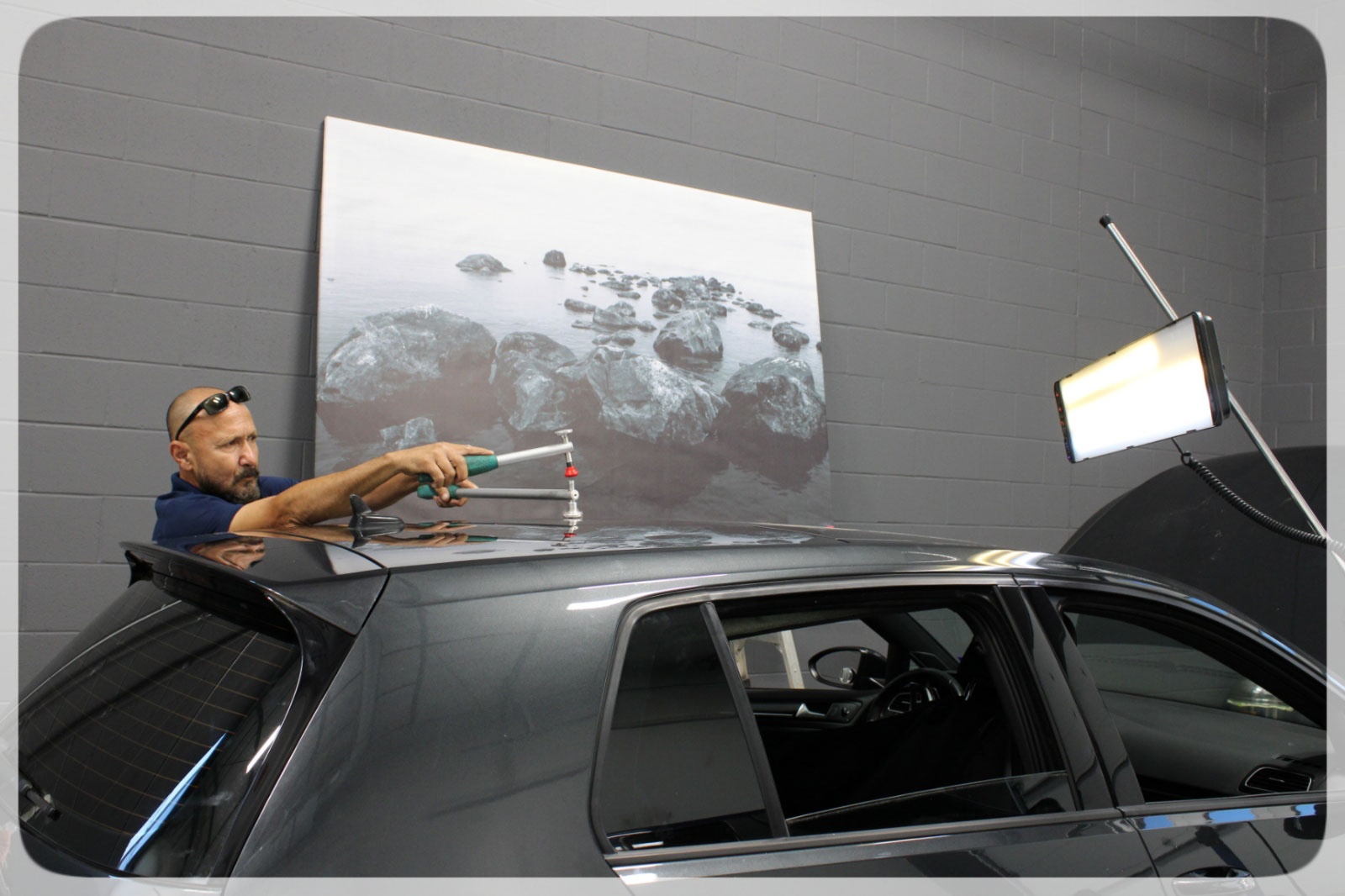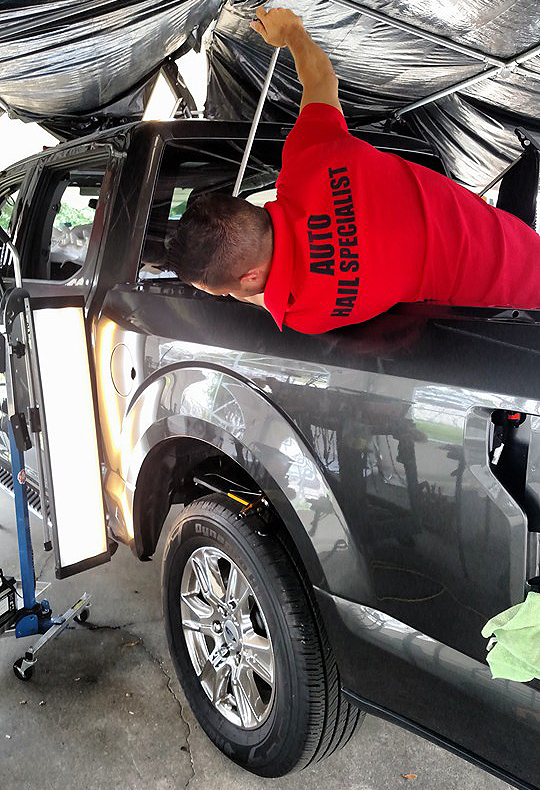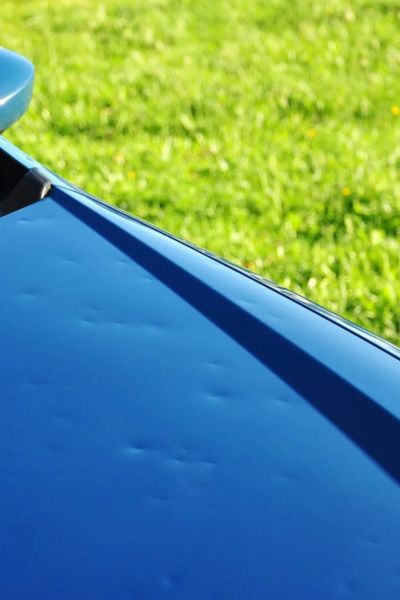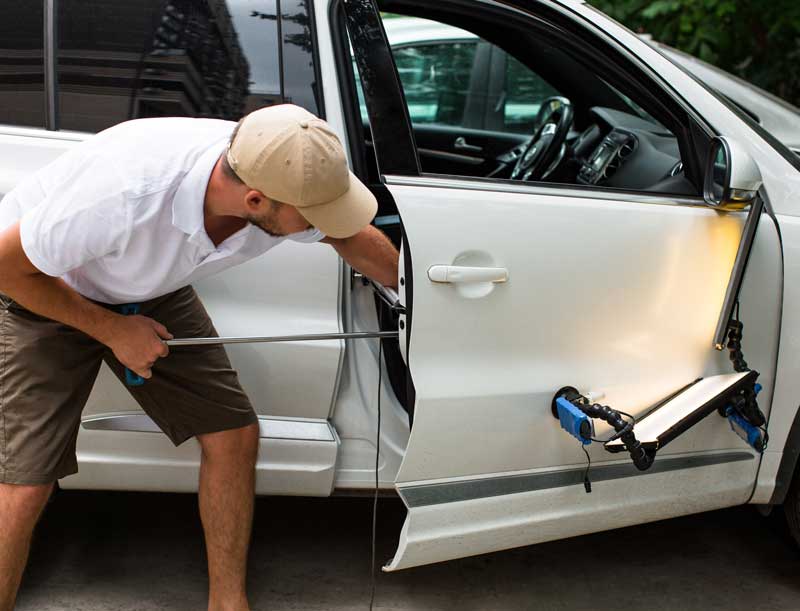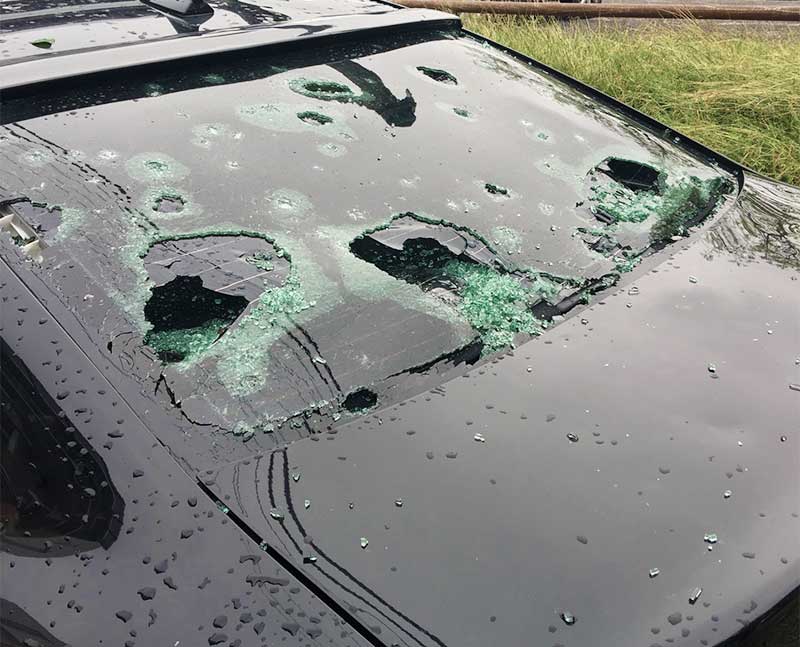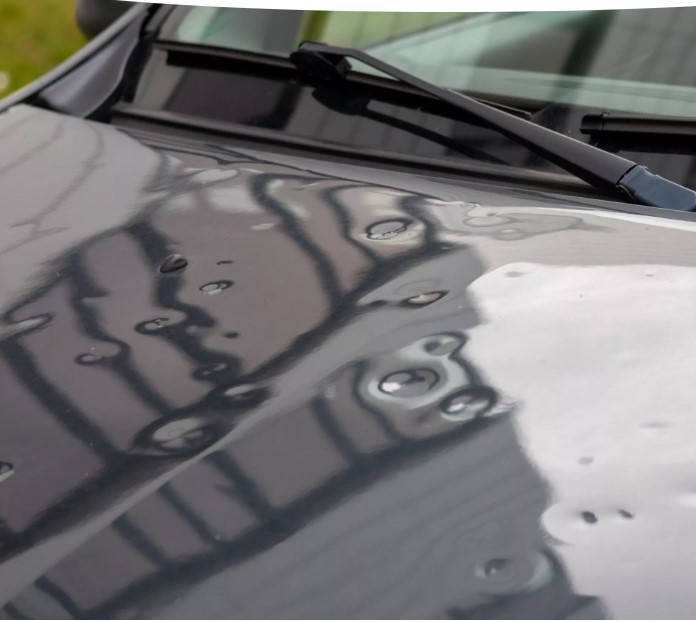Hail Dent Repair: From Pits to Perfection
Hailstorms, while captivating in their fury, often leave behind an unwelcome imprint on our beloved vehicles. Hail damage is a testament to nature's unpredictability. Each hailstone can damage our cherished vehicles, leaving behind a mosaic of dents and dimples. This blog delves into the science and art of hail dent repair. From cutting-edge techniques like Paintless Dent Repair (PDR) to the costs involved, we uncover what it takes to breathe life back into hail-damaged vehicles.
What is Hail Damage?
Hail damage on cars refers to the cosmetic or structural damage that happens when a vehicle gets exposed to a hailstorm. When hailstones hit a car's surface, they can cause dents, dings, scratches, and even cracks in the glass. The severity of hail damage is determined by elements such as hailstone size and velocity, angle of impact, vehicle construction and materials. The perfect way to restore your car’s beauty is hail dent repair.
Hail damage can impact the top, hood, trunk, doors, windows, and side panels of a vehicle. While tiny hailstones may produce minor dings and indentations, larger hailstones or a high volume of hail will inflict significant damage.
If left untreated, hail damage not only affects a vehicle's appearance but also its market value and structural integrity. As a result, many car owners seek prompt hail dent repairs to return their vehicles to pre-damage condition.
Types of Hail Damage
Hail damage may occur in a variety of ways, creating a range of different scars on vehicles.
Dents & Dings: Small to medium-sized hailstones can cause shallow dents and dings on the surface of a car. These flaws can be isolated or dispersed over panels such as the hood, roof, and doors.
Creases: Larger hailstones or those with substantial force may produce creases, which can stretch across panels. To restore smooth curves, more intricate restoration work is required.
Cracked Glass: Hail damage can cause damaged windshields, windows, and mirrors, reducing vision and demanding a replacement for safety reasons.
Paint Damage: Hailstones can scrape or chip paint, exposing the underlying metal to rust. This form of damage may necessitate hail dent repair as well as repainting.
Which Type of Hail Dent Repair is Best?
To determine the best method of hail dent repair, it is crucial to accurately assess the extent of hail damage.
The first stage is a thorough visual inspection of the vehicle's appearance. Technicians examine the surface for dents, dings, scratches, and other evidence of hail damage. They frequently employ specialized lighting to highlight flaws that would be less obvious under regular light conditions.
A paint depth gauge helps to determine the depth of the damage. This determines whether the paint has been affected, which is important for calculating the extent of hail dent repair and probable repainting requirements.
Advanced technology, such as PDR-specific software and special markers, allows technicians to map out the precise location and size of dents. This computerized mapping aids in the tracking of repair progress and ensures complete coverage.
Paintless Dent Repair
Paintless Dent Repair is an environmentally friendly hail dent repair procedure that restores the body of a car to factory-like condition in a fraction of the time and expense. PDR can eliminate hail damage from vehicles as well as creases, dings, and dents.
PDR is a fine blend of specialized tools and skilled hands. Technicians carefully access the dent from under the panel. They then massage the metal back into its original shape with a combination of pressure and finesse. The technique requires a thorough understanding of the characteristics of various metals as well as the ability to manage them skillfully.
Where is PDR Not Suitable?
While Paintless Dent Repair (PDR) is a highly effective and efficient method for repairing minor dents and dings, there are certain limitations and potential challenges that can arise during the process.
Paint Damage: PDR is meant primarily for hail dent repair when the paint has not been affected. If the paint is damaged, broken, or scraped, attempting PDR could result in further harm. Technicians must carefully assess the paint condition before proceeding with the repair.
Inaccessible Dents: Some dents may be located in areas that are difficult to access from the back, such as near sharp edges, bracing, or inner components. These dents may be unsuitable for PDR, or the process may necessitate more advanced techniques.
Deep Creases: PDR works best for shallow dents and dings. Deeper creases that have stretched or torn the metal may not respond well to PDR and may require conventional repair procedures.
Material and Panel Thickness: PDR works well on panels made of flexible materials, such as aluminium or steel, and those with uniform thickness. Extremely thin or rigid panels may not be suitable for PDR.
Prior Ineffective Repairs: If a dent was previously repaired using non-PDR procedures, the metal may have been damaged. In such cases, PDR may be less effective or may inflict additional damage.
Inexperienced Technicians: PDR necessitates specialized knowledge and skills. Inexperienced technicians may use too much force or use inappropriate techniques, resulting in overstretching, cracking, or even paint damage.
Technician Error: Even experienced technicians can make mistakes, particularly when working with intricate or uncommon dents. It is critical to select a reputed and skilled PDR professional.
Cost of Hail Dent Repair
The affordability of hail dent repair, even without insurance coverage, remains a beacon of hope for vehicle owners facing unexpected damage. While insurance can provide financial relief, there are viable options available to make hail dent repair accessible and manageable for those without comprehensive coverage.
One of the most cost-effective methods for hail dent repair is PDR. The process involves massaging the dents from the underside of the panel without the need for repainting. Since PDR eliminates the costs associated with paint and bodywork, it often proves more affordable than traditional repair methods.
Conclusion
As you navigate the world of hail dent repair, armed with knowledge about assessment, techniques, costs, and options, you can make informed decisions that align with your priorities and resources. Whatever the method, the goal is the same: to turn the scars left by nature's fury into stories of regeneration and renewal.

